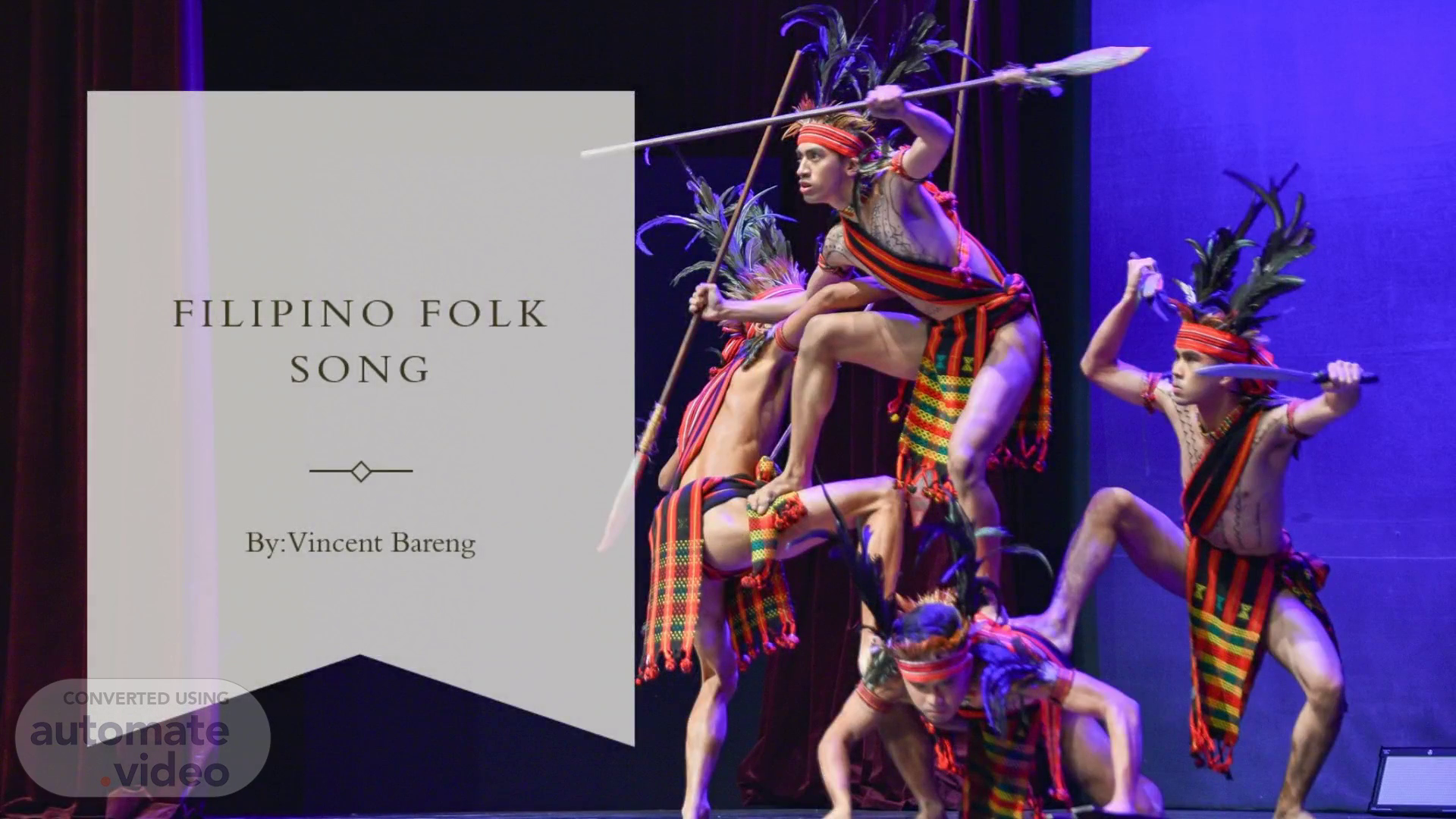Page 1 (0s)
Filipino Folk SOng. By: Vincent Bareng.
Page 2 (7s)
H istory of Filipino Folk Song. The Philippines is located in Southeast Asia and is an incredibly diverse nation in terms of language, religion, ethnicit y, and geography. Through time, Philippine society has witnessed the evolution of music expressed in different forms and stylistic nuances. Philippine Music is divided into four eras or traditions, namely the Ethnic, Spanish Colonial, American Colonial, and Contemporary traditions. The majority of Philippine Music revolves around cultural influences from the West, due primarily to the Spanish and American rule for over three centuries. Oriental (ethnic) musical backgrounds are still alive, but mainly thrive in highland and lowland barrios where there is little Western influence..
Page 3 (38s)
U nique characteristics of the music. Instrumentation - Ethnic music in the Philippines use native instruments that are generally grouped into wind instruments; chordophones or stringed instruments; idiophones or percussion instruments, and membranophones or percussion instruments using animal skins or membranes. Form - The three main forms introduced to the Filipinos were the harana, the kundiman, and the rondalla. Texture – Filipino folk song is a flexible genre. It can be Monophony, Polyphony, Homophony, and Heterophony..
Page 4 (1m 12s)
U nique characteristics of the music cont.. Harmony – Filipino Folk Songs use different traditional ethnic instruments, which makes the harmony unique. Guitar is one of the most used instrument for Harmony Melody – The melody of the music depends on the form of the song. For example, a “ harana ” is a form of song used in serenading. Thus, the melody often has low pitch and slow beat. T ext – Filipino folk songs are often open for interpretation. The lyrics are often based on the experiences of the writer through their life. Dynamics and Tempo– since Filipino Songs often tell stories, the dynamic and tempo changes in this genre are often tied directly to the lyrics..
Page 5 (1m 42s)
Folk song is a well-known genre in the Philippines, and anyone can perform it. Even though it is not that famous anymore compared to during the 1900s, it is still loved by many Filipino musicians. When Filipino Folk songs are performed on stage, most Filipinos just sit back while they enjoy and admire the performance. Filipino Folk genre is an elegant genre, and Filipinos take their time to appreciate it..
Page 6 (2m 4s)
L ist of Filipino Folk Song musicians:. Freddie Aguilar - He is best known for his rendition of "Bayan Ko", which became the anthem of the opposition against the regime of Ferdinand Marcos during the 1986 People Power Revolution Bayang Barrios – She hails from Bunawan , Agusan del Sur, and is known for her use of indigenous instruments and styles. Ruben Tagalog - He is known as the Father of Kundiman. Heber Bartolome – He is known for "stylistic tradition" of Philippine folk and religious melodies.
Page 7 (2m 27s)
Example of a Filipino Folk Song:. https://youtu.be/8HezuCQixps.
Page 8 (5m 8s)
References:. https://wfmt.info/2012/12/29/filipino-folk-music/#:~:text=Philippine%20Music%20is%20divided%20into,rule%20for%20over%20three%20centuries . Music 121 presentations.
